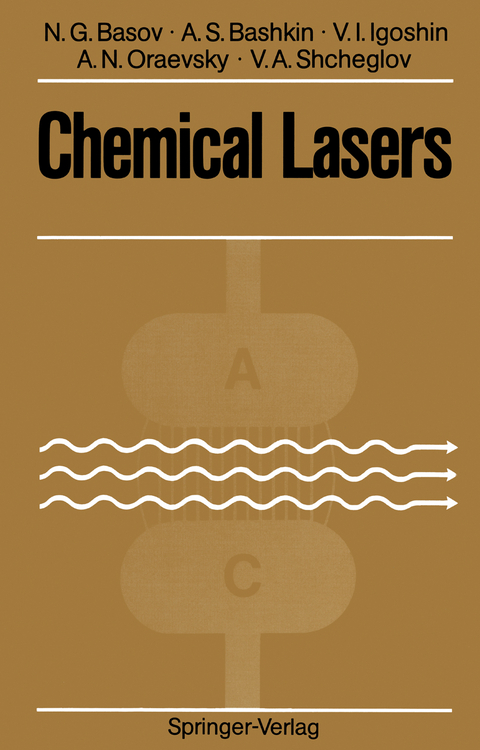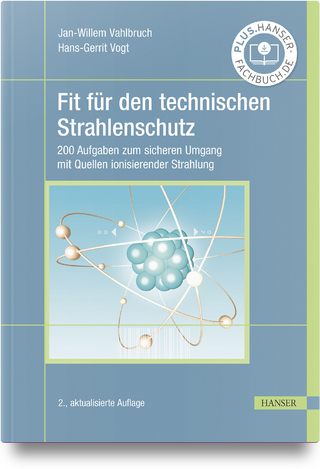
Chemical Lasers
Springer Berlin (Verlag)
978-3-642-70963-0 (ISBN)
Nobelprize winner N. Basov and his collaborators collected in this volume a vast amount of systemized experimental data and of theoretical results on chemical lasers thus placing it inbetween a textbook and a hand- book. The introduction is followed by a presentation of the fundamentals of chemical lasers. Subsequent chapters deal with specific types of chemical lasers including the most recent developments opening the road towards ecologically clean lasers.
1. Introduction.- 2. Fundamentals of Chemical Laser Kinetics.- 2.1 Qualitative Analysis of Chemical Laser Operation.- 2.2 Nonequilibrium Excitation in Chemical Reactions.- 2.3 Population Inversion and Amplification of Radiation in Yibrational-Rotational Transitions.- 2.4 Elementary Vibrational Relaxation Processes.- 2.5 General Equations Describing Physico-Chemical.- Processes Occurring in the Laser Medium.- 2.6 Calculation of the Generation and Amplification of Radiation in Multi-Level Chemical Lasers in Quasistationary Approximation.- 3. Kinetics and Numerical Analysis of Chain-Reaction Chemical Lasers (Pulsed Mode).- 3.1 Brief Review of the Theory.- 3.2 H2-F2 System.- 3.3 D2 - F2 - CO2 System.- 4. Pulsed Chemical Lasers.- 4.1 Requirements for the Parameters of Chemically-Pumped Pulsed Laser Systems.- 4.2 Initiation of Pulsed Chemical Lasers.- 4.3 Laser Mixture Preparation Problems.- 4.4 Non-Chain-Reaction Pulsed Hydrogen-Fluoride Lasers..- 4.5 H2(D2)-F2 Lasers.- 4.6 D2 - F2 - CO2 Lasers.- 4.7 Effect of Additives Accelerating the Hydrogen Fluorination Chain Reaction.- 4.8 Beam Divergence in Hydrogen-Fluoride Lasers.- 4.9 Pulsed Chemical Lasers Operating on Vibrational Overtones of HF and DF Molecules.- 4.10 Amplifier-Mode Operation of Pulsed Hydrogen-Fluoride Lasers.- 4.11 High-Repetition-Rate Operation of Chemical Lasers.- 4.12 Pulsed Chemical Lasers Based on Chain Reactions Other than the Hydrogen-Fluorine Reaction.- 4.13 Current Status of Pulsed Chemical Lasers.- 5. Continuous-Wave Chemical Lasers.- 5.1 Physical Principles of Operation of CWCL's.- 5.2 Purely Chemical Subsonic DF-CO2 Lasers.- 5.3 Supersonic HF (DF) Lasers..- A Review of Experimental Work.- 5.4 Principal Power Performance Features of Supersonic CWCL's.- 5.5 Prospects for the Development of theDF-CO2 and HF CWCL's.- 5.6 Other Types of CWCL's.- 5.7 Other Possible CWCL's Versions.- 6. Oxygen-Iodine Chemical Laser - a New Candidate for Engineering Applications.- 6.1 Experimental Results.- 6.2 Singlet Oxygen Generators.- 6.3 Kinetics of the Processes Occurring in the Active Medium of OICL.- 6.4 Pulsed OICUs.- 7. Photon Branching in Chain Reactions and IR-Radiation Initiated Chemical Lasers.- References.
| Erscheint lt. Verlag | 21.12.2011 |
|---|---|
| Übersetzer | Sergei G. Kittell |
| Zusatzinfo | X, 370 p. |
| Verlagsort | Berlin |
| Sprache | englisch |
| Maße | 155 x 235 mm |
| Gewicht | 586 g |
| Themenwelt | Naturwissenschaften ► Chemie ► Physikalische Chemie |
| Naturwissenschaften ► Physik / Astronomie ► Optik | |
| Naturwissenschaften ► Physik / Astronomie ► Quantenphysik | |
| Technik ► Elektrotechnik / Energietechnik | |
| ISBN-10 | 3-642-70963-X / 364270963X |
| ISBN-13 | 978-3-642-70963-0 / 9783642709630 |
| Zustand | Neuware |
| Informationen gemäß Produktsicherheitsverordnung (GPSR) | |
| Haben Sie eine Frage zum Produkt? |
aus dem Bereich


